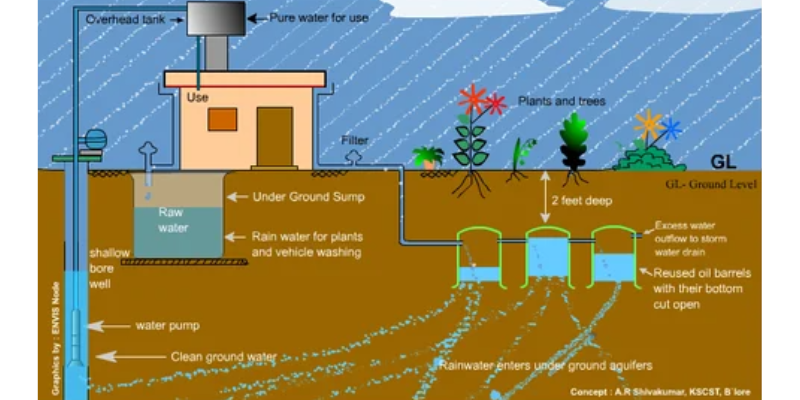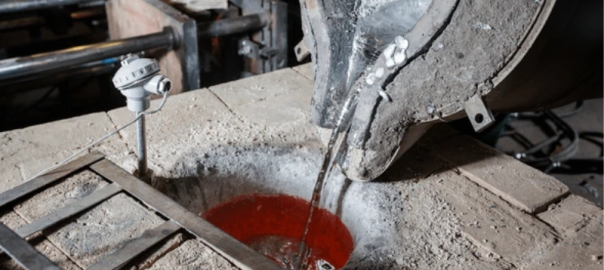
Introduction
Water resource management is crucial in today’s world due to increasing urbanization, climate change, and growing demand for sustainable practices. Real-time monitoring of water flow is vital for effective water management, especially in rainwater harvesting systems, flood management, and agricultural irrigation. One of the advanced technologies used for this purpose is the Electromagnetic Rain Water Flow Meter. This blog explores the working principle, benefits, and applications of electromagnetic flow meters, emphasizing their role in live monitoring of rainwater flow.
What is an Electromagnetic Flow Meter?
An electromagnetic flow meter (EMFM) is a device used to measure the flow rate of conductive fluids, including water. Unlike traditional mechanical flow meters, EMFMs do not have moving parts, making them highly durable and reliable. They operate based on Faraday’s Law of Electromagnetic Induction, which states that a voltage is induced when a conductive fluid flows through a magnetic field.
Working Principle
The basic working principle of an electromagnetic flow meter involves the following components:
- Magnetic Field Generation: Coils generate a magnetic field perpendicular to the direction of fluid flow.
- Electrodes: These are placed inside the pipe, perpendicular to both the magnetic field and the flow direction, to detect the induced voltage.
- Flow Tube: The section of the pipeline where the magnetic field is applied and measurements are taken.
When rainwater (or any conductive fluid) passes through the flow tube, it cuts across the magnetic field, inducing a voltage. The magnitude of this voltage is directly proportional to the velocity of the fluid flow. The induced voltage is measured by the electrodes and is processed by the flow meter’s electronics to determine the flow rate.
Key Benefits
- Accuracy and Reliability: EMFMs provide highly accurate flow measurements with minimal maintenance due to the lack of moving parts.
- Wide Range of Applications: Suitable for various fluids, including dirty or contaminated water, which makes them ideal for rainwater monitoring.
- Durability: Resistant to wear and tear, ensuring long-term operation even in harsh environmental conditions.
- Low Pressure Drop: The unobstructed flow path minimizes pressure loss, which is advantageous in maintaining system efficiency.
Applications in Rainwater Flow Monitoring
- Urban Water Management: Real-time data on rainwater flow helps city planners manage stormwater, reduce flooding risks, and optimize drainage systems.
- Agricultural Irrigation: Monitoring rainwater flow in irrigation systems can optimize water usage, improving crop yield and conserving water resources.
- Rainwater Harvesting: Ensuring efficient collection and utilization of rainwater by monitoring the inflow and outflow rates in storage systems.
- Flood Management: Early warning systems for floods can be enhanced by accurate and real-time monitoring of water levels and flow rates in rivers and streams.
Implementing Live Monitoring
To implement live monitoring using electromagnetic flow meters, consider the following steps:
- Sensor Installation: Install the EMFM at strategic points where rainwater flow needs to be monitored. Ensure the placement minimizes disturbances and accurately captures the flow rate.
- Data Transmission: Connect the flow meter to a data logger or a telemetry system that transmits real-time data to a central monitoring station.
- Data Analysis: Use software tools to analyze the collected data, generate reports, and provide actionable insights.
- Maintenance: Regularly check the calibration and functionality of the flow meter to ensure ongoing accuracy and reliability.
Data Integration and Management
- Cloud Integration: For enhanced accessibility and analysis, integrate the flow meter data with cloud-based platforms. This allows stakeholders to access real-time data from anywhere, enabling timely decisions and interventions.
- Dashboards and Visualization: Develop user-friendly dashboards to visualize the data. These dashboards can display real-time flow rates, historical trends, and predictive analytics.
- Alert Systems: Implement alert systems that notify relevant personnel of any anomalies or critical conditions. For example, a sudden increase in water flow could indicate potential flooding, triggering immediate action.
Case Studies and Real-world Examples
- Urban Infrastructure: Cities like Amsterdam and Singapore have implemented electromagnetic flow meters for monitoring stormwater drainage systems, resulting in improved flood management and water resource optimization.
- Agricultural Projects: In regions such as California’s Central Valley, EMFMs are used to monitor irrigation systems, ensuring efficient water use and aiding in the management of water rights and allocations.
- Environmental Conservation: Conservation projects in the Amazon rainforest employ EMFMs to monitor river flow rates, helping to study the impact of deforestation and climate change on water cycles.
Future Trends
As technology advances, the future of electromagnetic flow meters in rainwater flow monitoring looks promising:
- IoT and AI Integration: Combining EMFMs with the Internet of Things (IoT) and Artificial Intelligence (AI) will enable more sophisticated data analysis and predictive maintenance, improving the overall efficiency of water management systems.
- Enhanced Materials: Advances in materials science could lead to more robust and versatile flow meters capable of withstanding even harsher environmental conditions and broader ranges of fluid conductivity.
- Sustainability Focus: With increasing emphasis on sustainability, EMFMs will play a critical role in ensuring that water resources are managed responsibly and efficiently, supporting global efforts to combat climate change and water scarcity.
Conclusion
Electromagnetic rainwater flow meters are invaluable tools for modern water management practices. Their accuracy, reliability, and adaptability to various environmental conditions make them ideal for live monitoring applications. By leveraging this technology, urban planners, agricultural managers, and environmental scientists can make informed decisions to optimize water usage, mitigate flood risks, and enhance sustainability.












